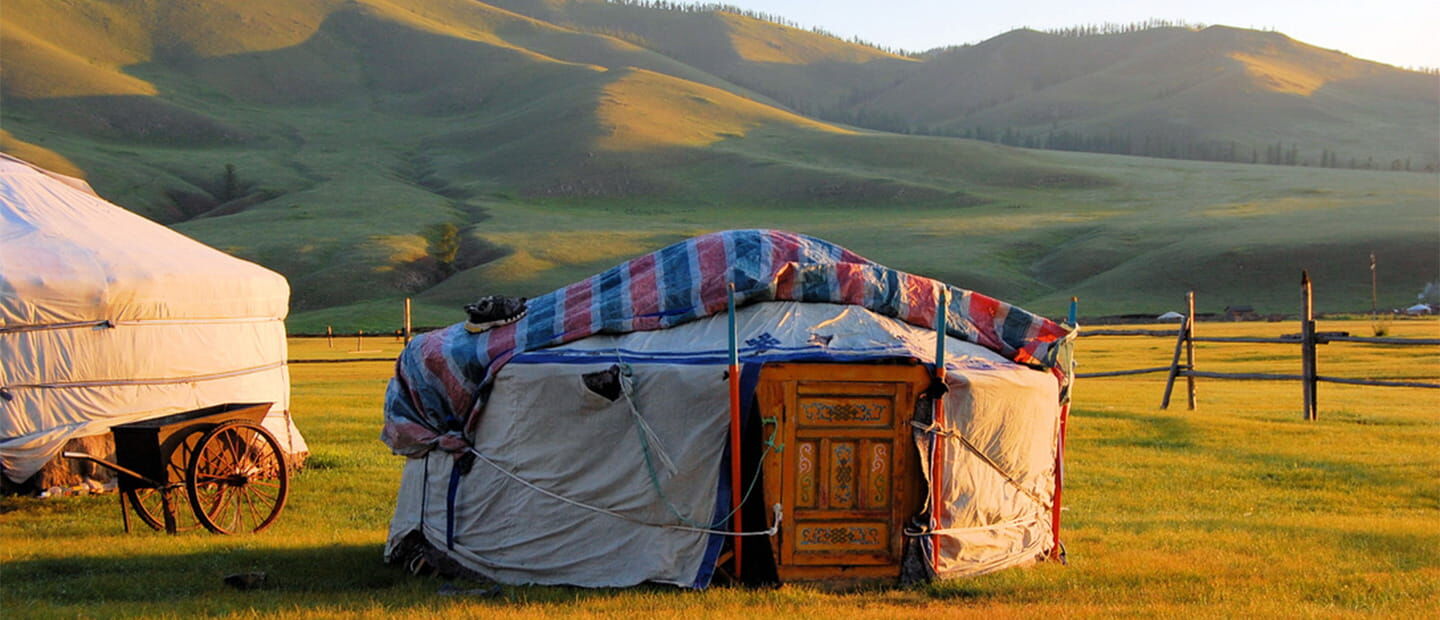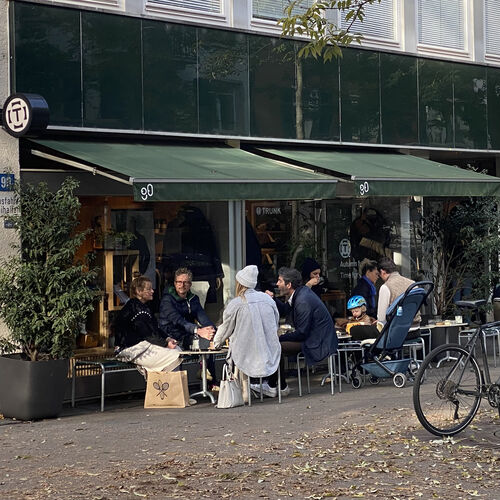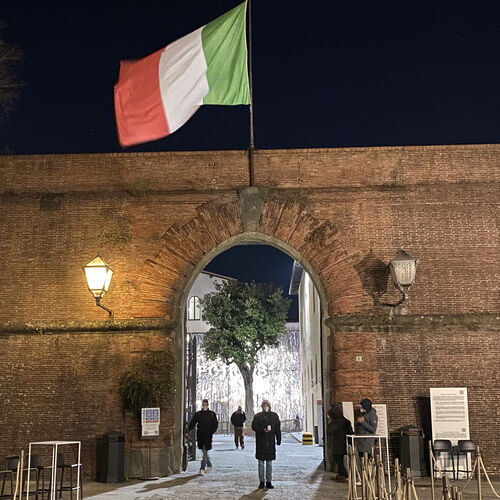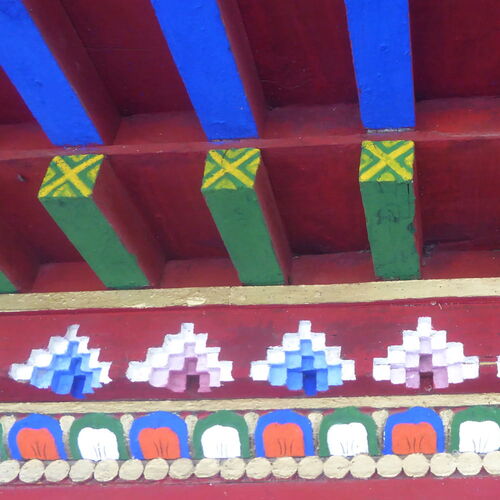Even today, up to 60% of the population of Mongolia still live in traditional yurts. Accustomed from birth to a nomadic lifestyle that means moving their yurts frequently from one place to the next, Mongols can build or dismantle their “mobile homes” in just 30 minutes. Every member of the family has their own specific tasks. Grandparents, parents and children all know exactly who is responsible for packing what, who has to go out and round up the herd, and who is in charge of stowing away the yurt. Traditional they may be, but these houses are very much in keeping with modern-day thinking.
They are sustainable and, thanks to the natural materials that go into their construction, offer an incredible indoor climate. A yurt is made of cotton, felt, wood, and in some cases leather. Such are the materials that nature provides and from which these nomadic people construct their cosy homes.
And just like when the yurts are assembled or dismantled, every member of the family knows their place inside the round tent as well. The interior is so well organized that the family can cook, work and sleep in comfort despite the limited space.
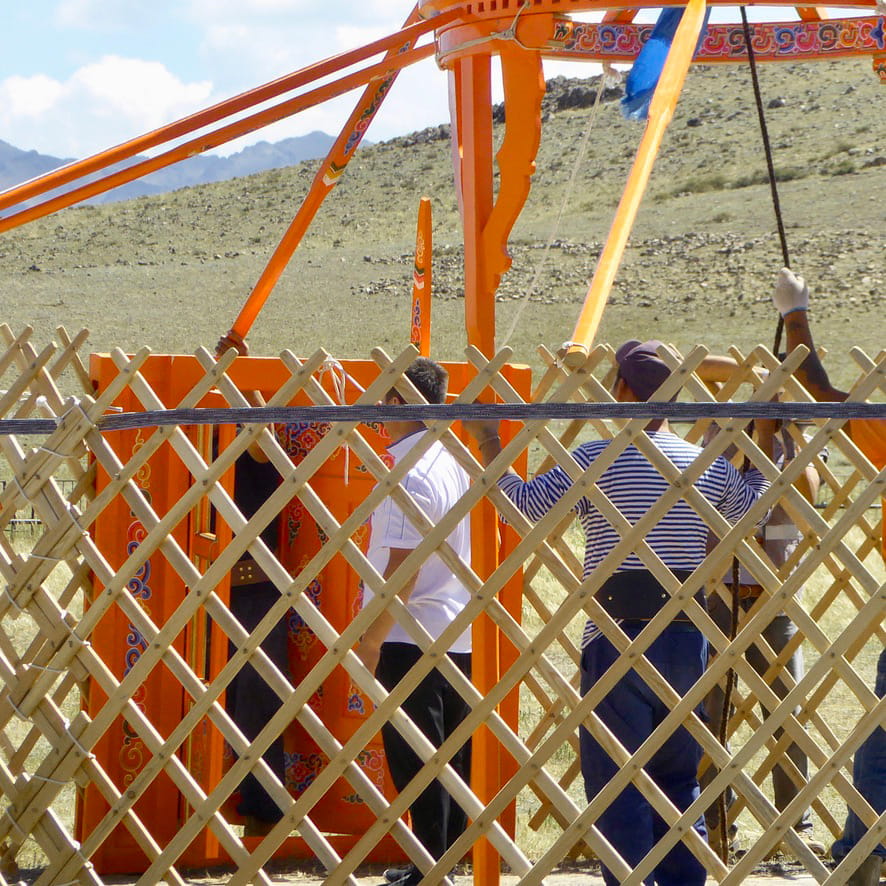
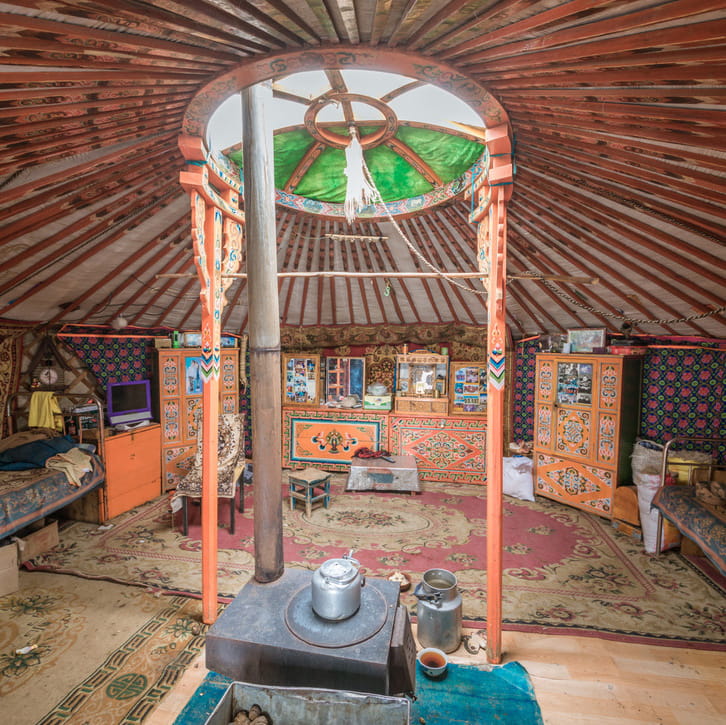
Mongolian yurts are based on a latticework of wood and the size depends on the number of interlinked sections (normally 4-6) that form the circumference. The roof poles angle upwards from the top of the walls to the central wheel or crown. Latticework and roof poles are held in place with rope or leather straps. At the top, the poles slot into place in the crown. Depending on the size of the yurt, the crown will be supported by one or two interior posts. The wooden framework is covered with felt and dense, sturdy sheets of cotton. The felt provides insulation against winter cold and summer heat. The heavy cotton covers form the outer skin that protects the yurt from damp.
One remarkable feature of the construction process is that the furnishings are first laid out on the floor plan of the tent before the yurt is built up around them.

